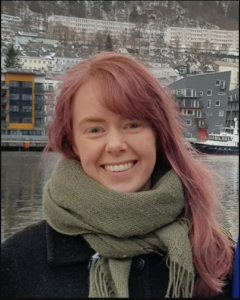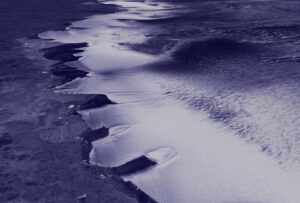When asked whether you want to go to Antarctica during regular times, there’s just one sensible response. When asked whether you want to go to Antarctica during highly unusual times, there’s still really only one possible response – you grab the opportunity with both hands, and you go to Antarctica. In a week, I’m starting a slow but steady journey towards Antarctica. I thought I’d write a bit about everything that’s happening now, the plan for the cruise and preparations. But first, since this is my first contribution to the blog, I’ll start by introducing myself.

I’m Vår, and I started my Ph.D. this summer at the Geophysical Institute in Bergen with Elin and Kjersti as my supervisors. Right now, I’m working with mooring data from the Amundsen Sea, but the next step is to begin a combined model and mooring study from the Weddell Sea. There, I’ll be looking mostly at shelf-break interactions at the Filchner trough opening and look for wind-field conditions favorable for far-reaching on-shelf heat transport.
Since I started working with Antarctic oceans, I’ve had a small hope that I would get the chance to join a cruise and go there sometime. So when I one Monday morning in the middle of October opened my inbox to find an email with the header ‘cruise’, stating that there was a possibility that I could travel to Antarctica this winter, I was slightly speechless and very excited. After a week or so with anticipation, I got a confirmation that I would be able to join the cruise. Since then, the practical details have started to dawn on me: In total, we’ll be gone for two months (including Christmas and new years). Of these two months, we will spend about 7 to 10 days in Antarctica. So how does this add up? Due to Covid, we start off by spending one week in isolation at a hotel in Denmark. After this, we board the ship but need to stay in port for a week to finish our two quarantine-weeks. We then start our transect southwards, which takes four weeks. Reaching Antarctica, we do our science for 7 to 10 days (fingers crossed for 10) before a week-long transit takes us to Cape Town, and we fly home. I realize that I dread the first week of isolation, but then again, when you’re able to go to Antarctica, there’s just one sensible response.
The Norwegian Polar Institute is organizing the scientific work on this cruise. In total, the science team will consist of five people: Tore Hattermann, Kirsten Forssan, Sebastien Moreau, Julius Lauber, and myself. The plan is to make our way to the Fimbull Ice Shelf, where they have moorings that need some updates. These moorings are located along the continental shelf-break, where the ocean depth suddenly drops from a few hundred meters to about 2000 meters. Processes along this shelf-break are crucial for the southward flow of warm water, and consequently, important for how much the ice shelves melt. These moorings are also upstream of known regions where warm water flows in under the Fimbull Ice Shelf, where other moorings are located. A mooring array here can therefore provide valuable information on how upstream conditions affect the Fimbull Ice Shelf.

In addition to the mooring retrivement and deployment, we will run a couple of CTD-sections (conductivity for salt content, temperature, density) and (hopefully) measure turbulence along the ice shelf front and underneath the fast-ice cover. If the weather permits it, we will also go onto the ice and measure properties underneath the ice.
The ship we are traveling with is not a usual scientific ship, but a freight ship, traveling southward to supply the Troll station. This means that it does not have the scientific equipment installed – we have to make a make-shift scientific deck with labs and winches ourselves. If this works out well, it will open up for new possibilities, where scientific data collection and supply missions can be done all at the same time, which is actually quite exciting.
Right now, I’m trying to get my head around everything I have to get done before I leave. It’s challenging to think about learning how to use the MSS-instrument and remember to download all the data I think I might want to work with for the next two months, at the same time as deciding how many woolen socks I need and what I’ll wear for Christmas. Still, I just shipped off one bag to the ship, I’ve gotten my health and teeth certificates signed, so I think I’m getting there. And there’s still one week left before I’m off.
Written by Vår Dundas.
